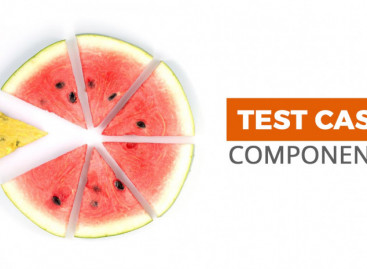- QATestLab Blog >
- QA Basics >
- Test Design Specification
Test Design Specification
Test design is a procedure that explains how testing should be performed. It consists of processes that are aimed at effective test cases identification. In some projects preparation of a test plan may be ignored. They are convinced that writing test plan, test procedure specification, or test design specification is nothing but a time-wasting procedure. Contrary to this opinion, test design specification contains the information and parameters that are required for effective and detailed software testing.
Test Design in Quality Assurance
Test design documents serve for software testers suggesting testing procedure details and actions. They are useful in removing doubts concerning testing methods and techniques. Test cases are documented according to the IEEE 829 Standard for Test Documentation.
What is Test Design?
In its essence, Test Design is comprised of 4 points, and here they are:
- Test Design is a stage in the software testing procedure, which presupposes designing and creating the test cases.
- Test Case is a complex of stages, definite conditions and criteria required for tested function realization checking.
- Test Suite is a test set which implements business task, performed by the tested system.
- TestLink, TestRail – systems for description, management and running the test cases.
What Are the Constituents of Test Design Specification?
Test Design Specification consists of several components. They are:
- Test Design Specification Identifier determines the specific document type and helps to differentiate it from other files.
- Features to be tested – items or aspects which require checking. Component is regarded as a Test Design Specification object.
- Approach Refinement – technique or method which can be implemented while testing mobile or web applications.
- Test identification. It is the list of test cases set up in test design. It includes an identifier and a concise description of every test case.
- Pass/fail criteria. Background which determines if software components pass or fail the testing process.
Test Design Specification Categories
There are three categories, each of them performing a specific role:
- Test Condition – depending on the software peculiarities, client requirements and test limitations.
- Thorough Approach. It explains procedures which help to get rid of uncertainties while performing product testing.
- High Level Test Cases. It registers the data defining the software functionality.
Final word
Test Design Specification plays a crucial role in simplifying the testing process. This documentation possesses a great deal of significance as it assists in communication between testing team members. When it comes to more detailed communication on software system features, it also helps to lead a more proper testing process. The letter one aspect is essential to meet the customer’s requirements.
Learn more from QATestLab
Related Posts:
About Article Author
view more articles








No Comments Yet!
You can be the one to start a conversation.